UTS and Shanghai University are celebrating more than 30 years of international collaboration, showcasing the powerful intersection of creativity and commerce.
2025 UTS x Shanghai University Creative Industries Showcase
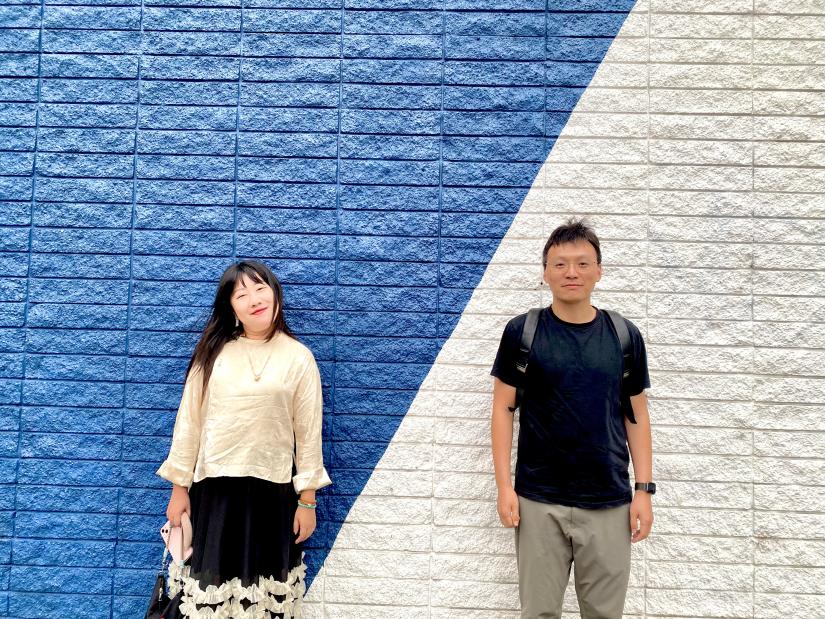
Caption
Professor Song Tianyi and Professor Yang Ye
Over three days, UTS hosted an open exhibition, workshops and experiences to highlight how our respective creative sectors contribute to shaping economic, social, and cultural landscapes.
“This event not only celebrated our enduring partnership with Shanghai University, but also the joy and value of truly creative work,” said A/Prof Susie Khamis, Associate Dean (International), UTS Faculty of Design & Society.
The Creative Industries Showcase featured contributors from the UTS Faculty of Design and Society who exhibited work across animation, film, music and sound, media, urban design, fashion, architecture and design.
UTS welcomed Professors Yang Ye and Song Tianyi from SHU Academy of Fine Arts, who brought with them a series of beautiful exhibits themed around Iron/Steel, Bamboo, and Weaving & Embroidery. These works, presented alongside local exhibitions and workshops, helped further strengthen academic and industry ties between Australia and China.
This event not only celebrated our enduring partnership with Shanghai University, but also the joy and value of truly creative work.
“The Faculty of Design and Society is a proud champion of all things creative, so we were thrilled to host Professors Yang and Song, learn more about their amazing work, as well as that of our wonderful colleagues from both UTS and Shanghai University who work across fashion, film, music, product design and so much more,” Susie said.
Through collaboration with academic, industry and community stakeholders, the Creative Industries Showcase served as a platform for interdisciplinary exchange and forward-thinking innovation.
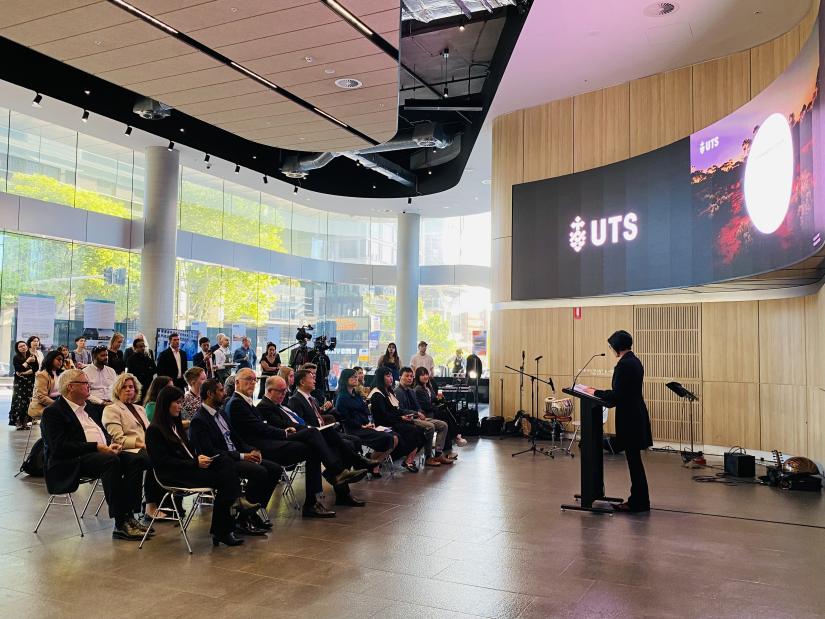
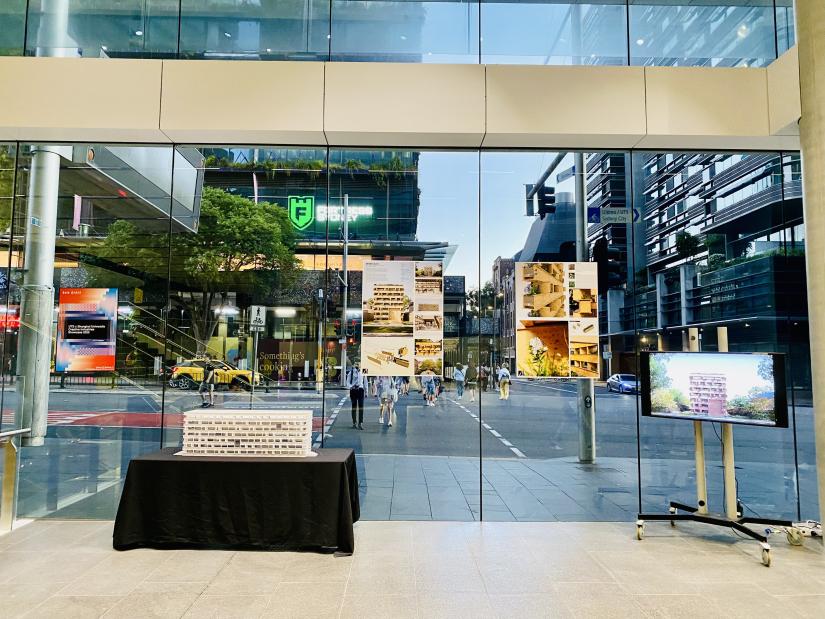
Shanghai research presentations
The Showcase also featured two fascinating talks in RES Hub presented by the Shanghai Academy of Fine Arts academics. Prof Jua Cilliers, Associate Dean (Research) in the Faculty of Design and Society said that creative research thrives where ideas, cultures and disciplines intersect.
“This partnership between UTS and Shanghai University exemplifies how creative industries can bridge global contexts and demonstrates UTS’s commitment to advancing research that connects creativity with social, cultural, and economic innovation, reinforcing our role as a global leader in creative collaboration,” Jua said.
Prof Yang, Assistant Professor in the Faculty of Architecture, discussed the process of culture-led urban regeneration in Shanghai, with a particular focus on the annual Shanghai Urban Space Art Season (SUSAS). This biennial event reimagines the relationship between city, space, and art, transforming Shanghai into a living gallery.
This partnership between UTS and Shanghai University exemplifies how creative industries can bridge global contexts and demonstrates UTS’s commitment to advancing research that connects creativity with social, cultural, and economic innovation, reinforcing our role as a global leader in creative collaboration.
“The city becomes the exhibition site, space itself becomes an artwork and art is integrated into everyday life,” Prof Yang said, adding that the urban spaces used are not just backdrops but active participants in this cultural transformation.
Prof Yang traced SUSAS’s origins to Shanghai’s shift from large-scale construction to urban renewal, marked by the 2015 Regulations on Urban Regeneration Management.
Urban regeneration as a catalyst for creative spaces
Speaking about the inaugural SUSAS held in 2015, Prof Yang said that the program symbolised a new era, focusing on public space, art and adaptive reuse.
Each edition since has responded to the city’s changing agenda, with themes such as Urban Regeneration (2015), Connection (2017), Encounter (2019), People’s City (2021), Metro-biosis (2023), and Quantum City (2025).
Venues have included a former aircraft hangar, the 80,000-Ton Silo and numerous waterfront sites along the Huangpu River.
Prof Yang said that these choices reflect a shift from “demolish, rebuild, preserve” to “preserve, adapt and redevelop,” valuing historical context and architectural authenticity. For example, the 2017 edition’s silo renovation preserved industrial heritage while introducing new public functions.
SUSAS has driven many major urban projects, such as reorganising 45 kilometres of the Huangpu River’s central section, transforming industrial edges into accessible landscapes and connecting waterfront space.
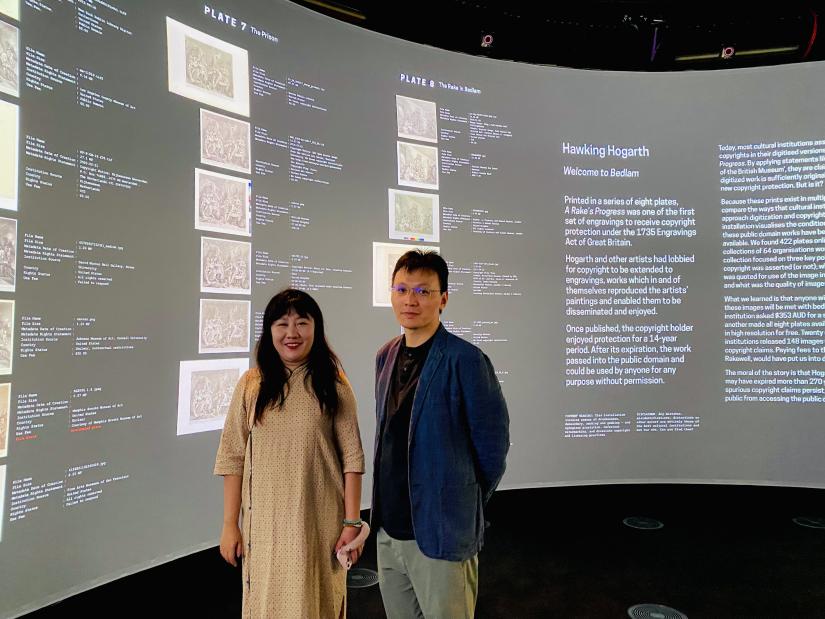
Prof Yang discussed other highlights including:
- The “Tale of Three Cities” exhibition, during which Shanghai connected with Sydney and Venice through a shared relationship with water (2019). Among installations were “Pixel Bund” and “Aqueous Landscape” illustrating the fusion of art and urban renewal.
- The “Metro-biosis” theme that explored symbiosis between humans and nature, with venues like the White Cat Detergent Factory symbolising industrial transformation (2023).
- The “15-Minute Community” concept that became a feature of the program since 2021, advocating for neighbourhoods where daily services are within a short walk, fostering civic life and well-being.
Creating lasting urban renewal from art
Prof Yang described SUSAS’s impact as both reflective and catalytic, establishing a “Shanghai Model” of regeneration in which exhibition spaces span community renewal, natural ecology, rural revitalisation, industrial heritage and waterfront development.
SUSAS embodies the idea of culture-driven urban renewal, reflected in two dimensions.
“SUSAS embodies the idea of culture-driven urban renewal, reflected in two dimensions,” he explained. “First, it acts as a mirror of urban development, reflecting the evolution of Shanghai’s spatial and cultural identity; Second, it functions as a driving force for transformation, directly influencing regeneration projects across the city.”
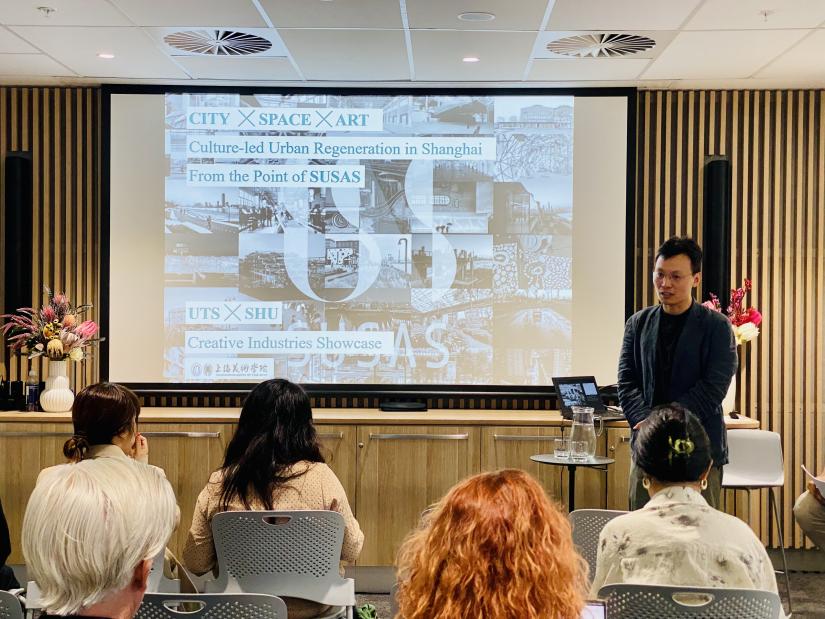
Preserving cultural heritage through design
A lecturer, fashion designer and curator at Shanghai University, Prof Song is a leading figure in the preservation and innovation of intangible cultural heritage through contemporary design. Her work bridges tradition and modernity, fostering collaborations that revitalise ancient crafts for new generations.
Prof Song spoke about an innovative sports shoe design project, a collaboration between Shanghai University and Warrior, one of China’s oldest sports brands.
The Intangible Cultural Heritage (ICH) 100+ Innovative Sports Design Project launched in 2024 integrates 100 forms of traditional Chinese craftsmanship into innovative sportswear, producing 100 cross-disciplinary sneaker designs and related products. The project not only celebrates Warrior’s centenary but also positions Shanghai as a hub for creative engagement with national and international design events.
Prof Song said that this collaboration between the university and the brand is a way to preserve and modernise traditional Chinese methods of craftsmanship as the designs incorporate traditional Chinese techniques, fabrics and patterns.
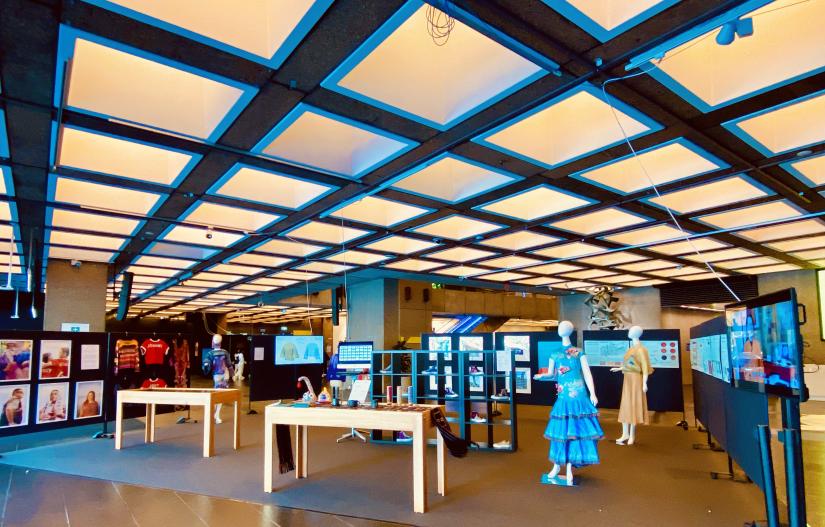
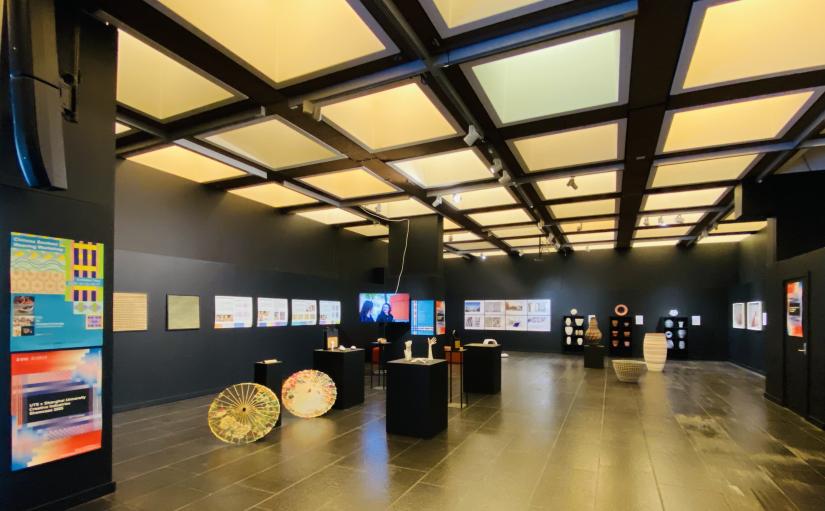
She shared examples from student designers who have incorporated the traditional weaving techniques of the Wa ethnic group of China’s Yunnan Province into their modern shoe designs.
“The ICH 100+ project rests on three core principles; the brand-university collaboration leveraging the brand’s market strength, the tradition of innovation where artisans save product cultural authenticity and consumer feedback,” Professor Song said.
Prof Song’s approach is deeply interdisciplinary, drawing on expertise from art, technology, visual communication, product design, craft arts, and traditional Chinese painting.
She describes the project as “an educational experiment in design innovation,” where students are encouraged to bridge traditional craftsmanship with modern technology, cultivating a new design language that respects cultural roots while responding to contemporary lifestyles.
One of the project’s achievements is the establishment of a replicable model for revitalising traditional crafts through the integration of industry, academia, research, and application.
The ICH 100+ project rests on three core principles; the brand-university collaboration leveraging the brand’s market strength, the tradition of innovation where artisans save product cultural authenticity and consumer feedback.
“ICH 100+ forms a complete innovation cycle: from academic research, to industrial implementation, to craftspeople preserving tradition, to designers translating it creatively, and finally, to consumer-driven iteration,” Prof Song said.
The ICH 100+ initiative also creates valuable opportunities for consumer engagement, ensuring that cultural heritage remains vibrant and relevant.
“I sincerely invite anyone interested in intangible cultural heritage protection and innovative design to contact us to learn and discuss more,” Prof Song said, adding that this important work not only preserves the past but also inspires the future.
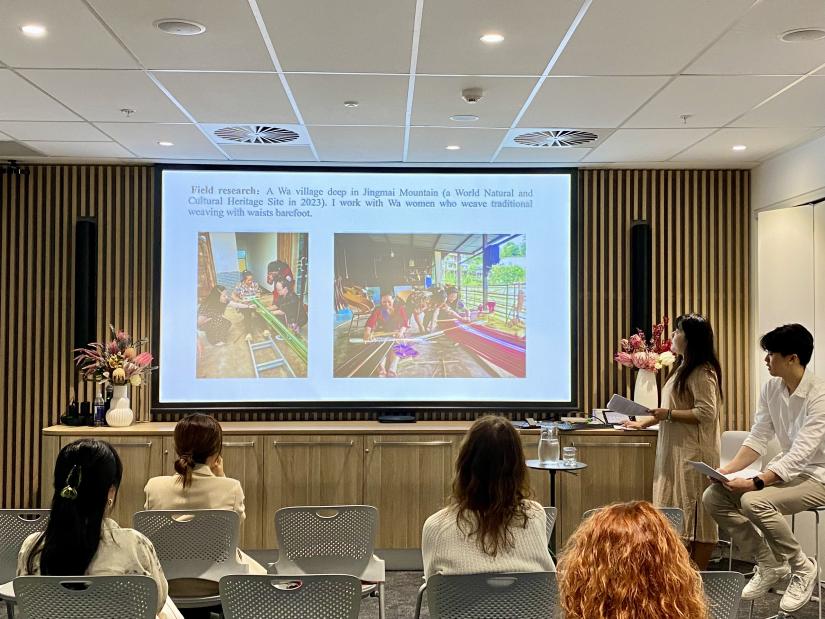
What’s next?
Over the next three years, UTS and Shanghai University will continue to bring together students, academics, industry professionals and cultural leaders to share knowledge, spark innovation, and foster lasting partnerships.
“We look forward to seeing this friendship grow and deepen over the next thirty years, confident that our respective strengths in the Creative Industries remains a focal point in our warm collaboration,” said Susie.